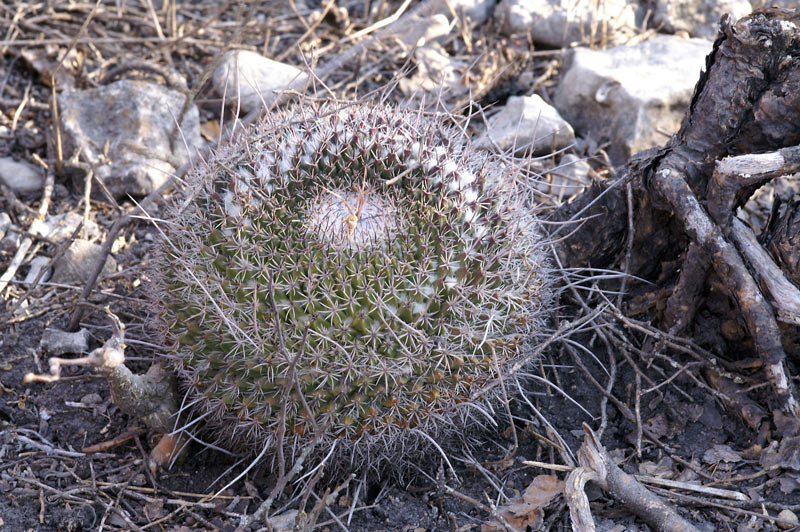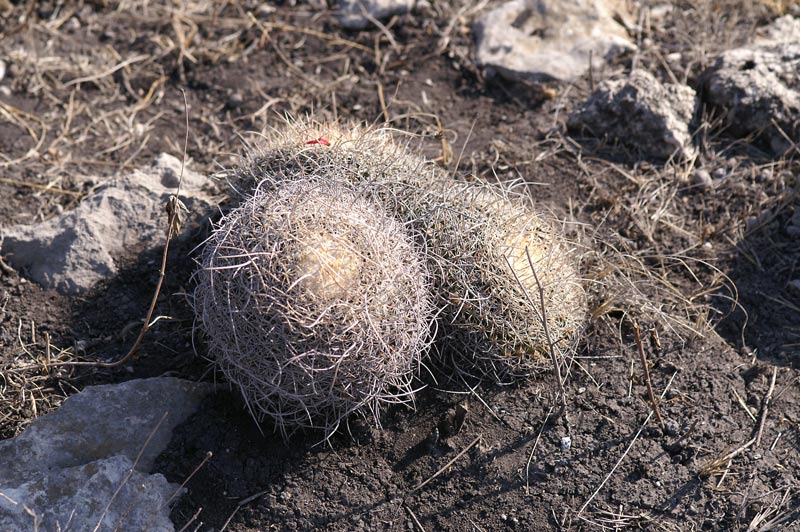
Mammillaria of the Month
(click here for previous Mamms of the Month)
Mammillaria mystax

Photo: Plant in habitat: M.mystax Copyright: Chris Davies 2011

| Mammillaria mystax is another species
from Puebla and Oaxaca, growing mostly in limestone. It was first
mentioned by this name in 1829, and then described in 1832 by Martius. It is a very variable species, with a significant number of names being consigned to synonomy with it. Names such as M. casoi, M. crispisaeta, M. erythra, M. huajuapensis are just some of these, although each represents one form of this species from a specific habitat area. . It is described as solitary, cylindrical, but in fact it is almost always seen as globular or even sub-globular. It has bristles in the axils, often quite in evidence, and each tubercle has between 3 and 7 radial spines, mostly white, and relatively short, under 1 cm. It's central spines are variable in number, from 1 to as many as 7, most typically 3 or 4, with one which is poften long and tortuous. It forms a magnificent ring of flowers around the plant, rose purple, and about 2.5cm long. Cultivation is not difficult, andit germinates readily from seed, which, as the plant rarely offset,s is the normal means of propagation. It grows on flat stony areas rather than on rocky slopes, and probably enjoys a little more water than some of the rock growing species. It does therefore like the sun, and a good position will bring of its best. The photos above are both habitat photos, from the Mesa de San Lorenzo, just outside Tehuacan in the state of Puebla, and demonstrate the variability of the plant, ecah head being about 20-25cm across. Having said that the plant is normally solitary, I show as the second photo, one with three heads, but whether this is in fact an offsetting plant, or three seedlings growing in close proximity, was not able to be determined without excavation, which I was loath to undertake.
|